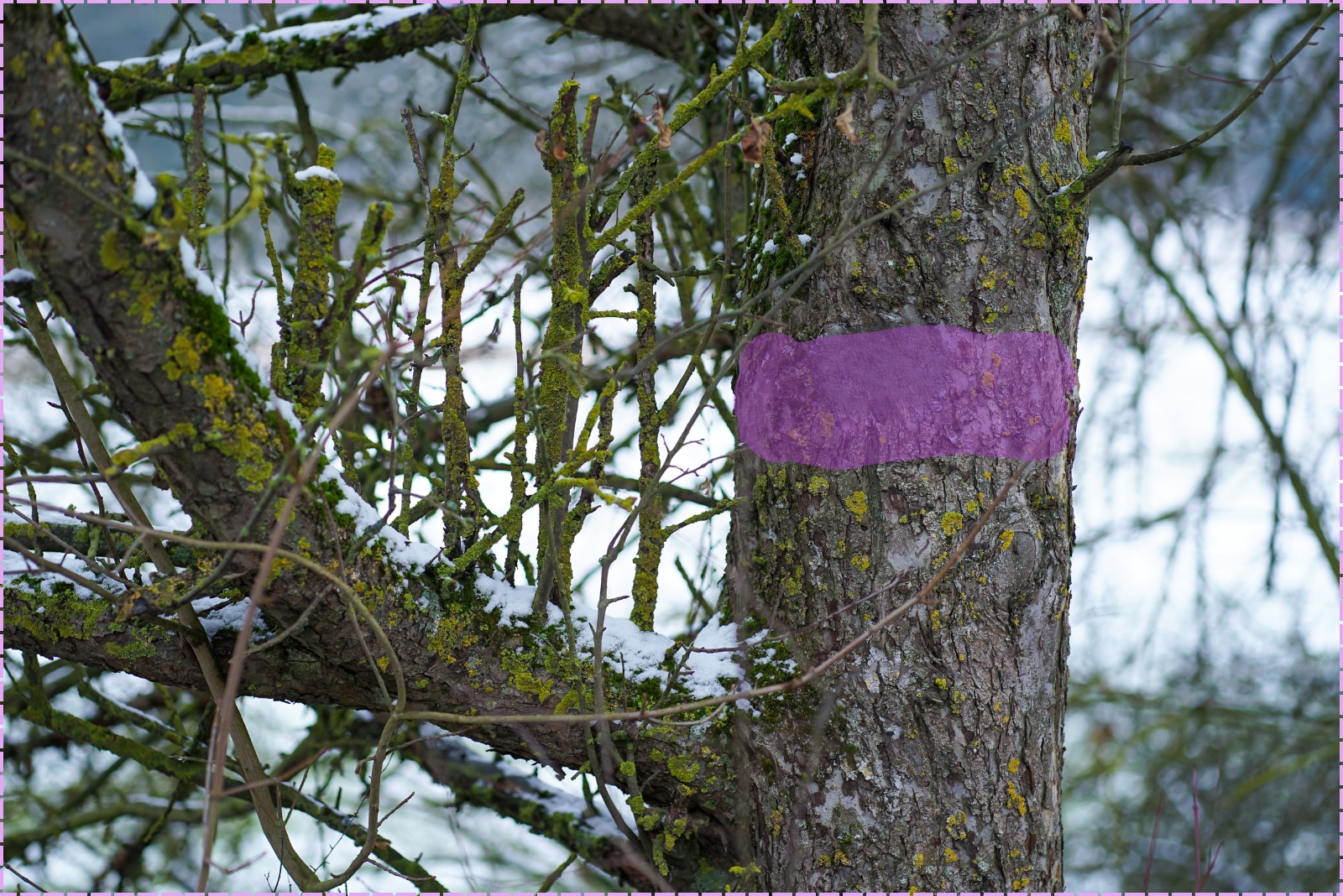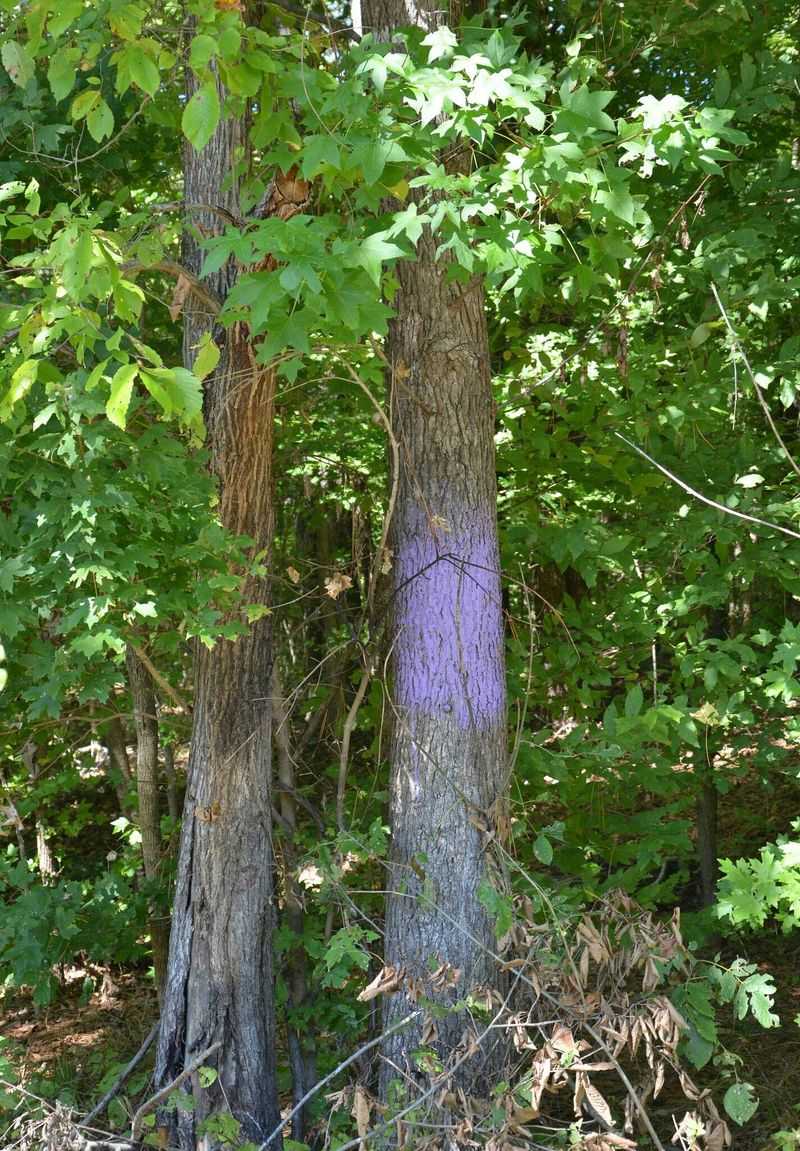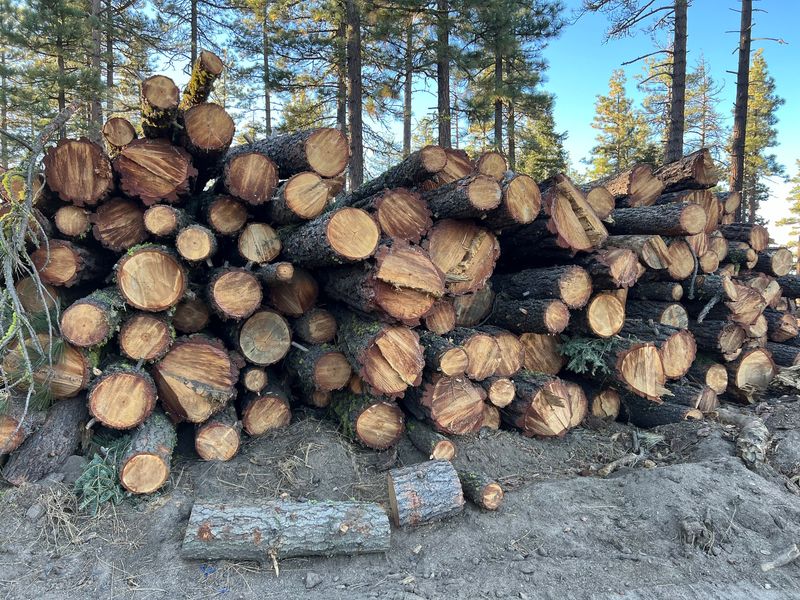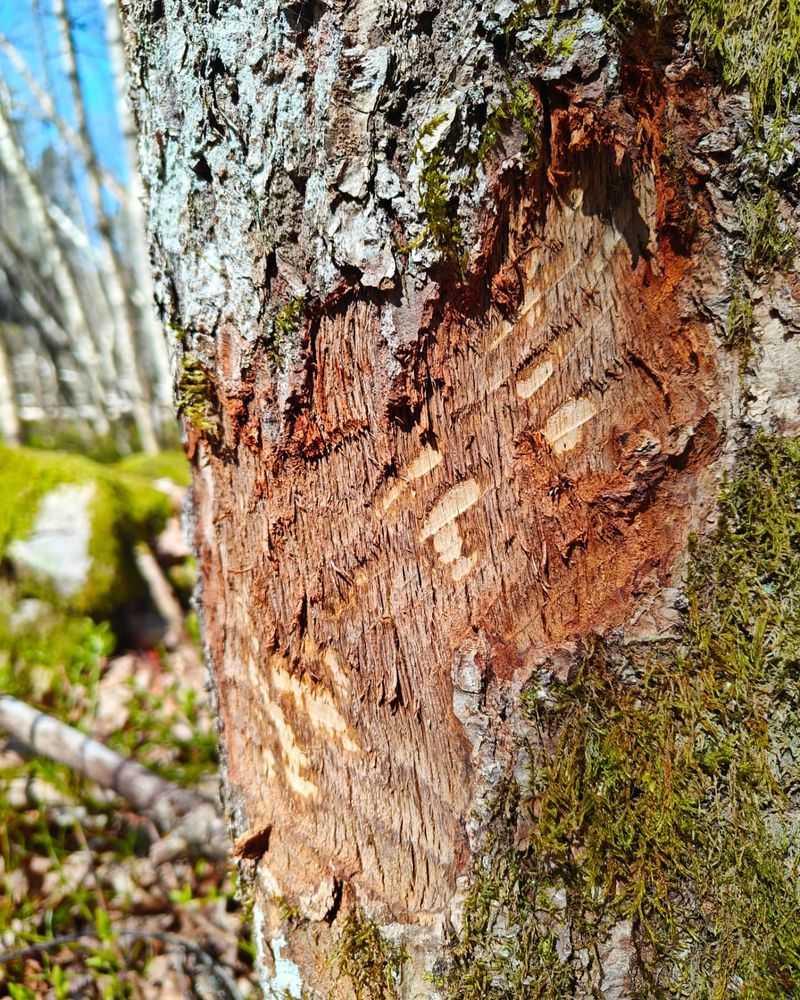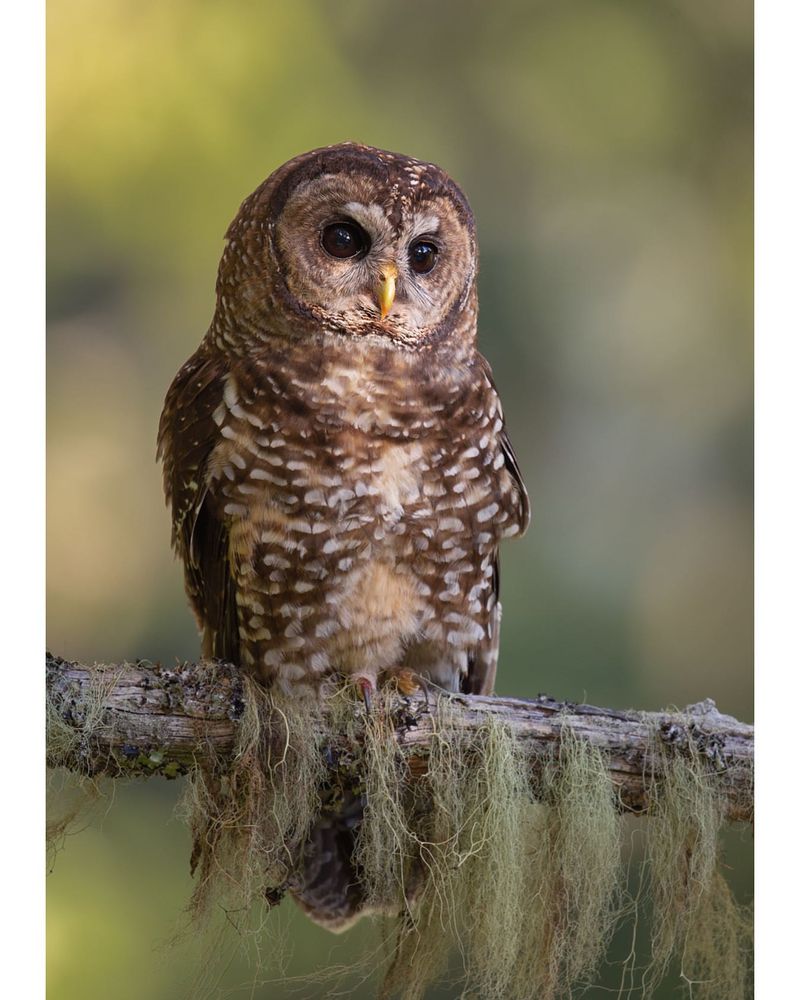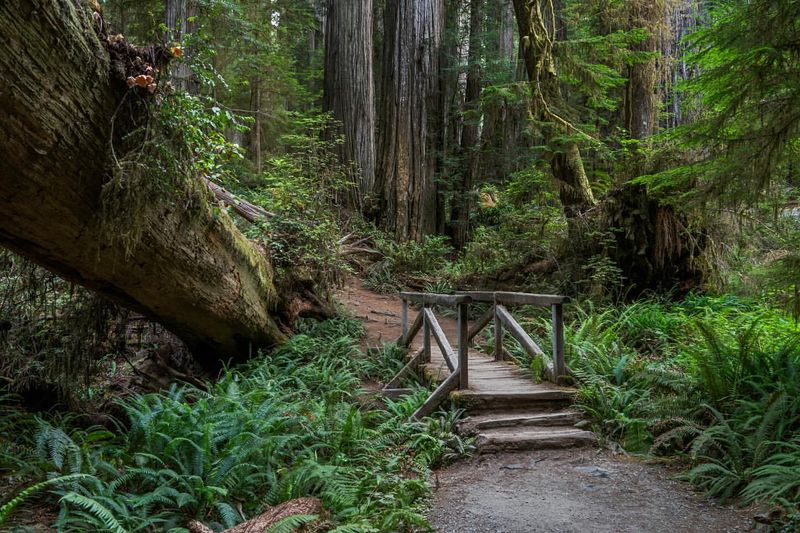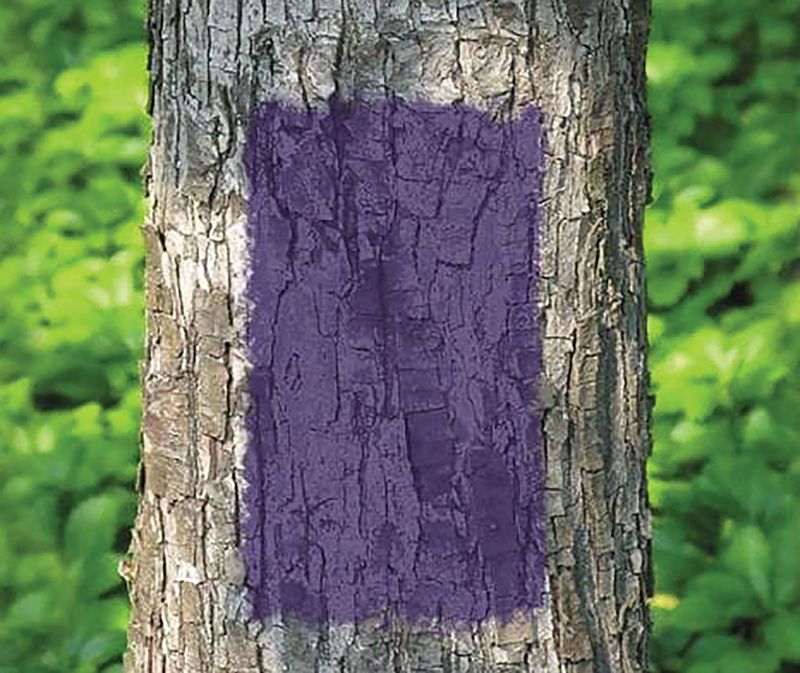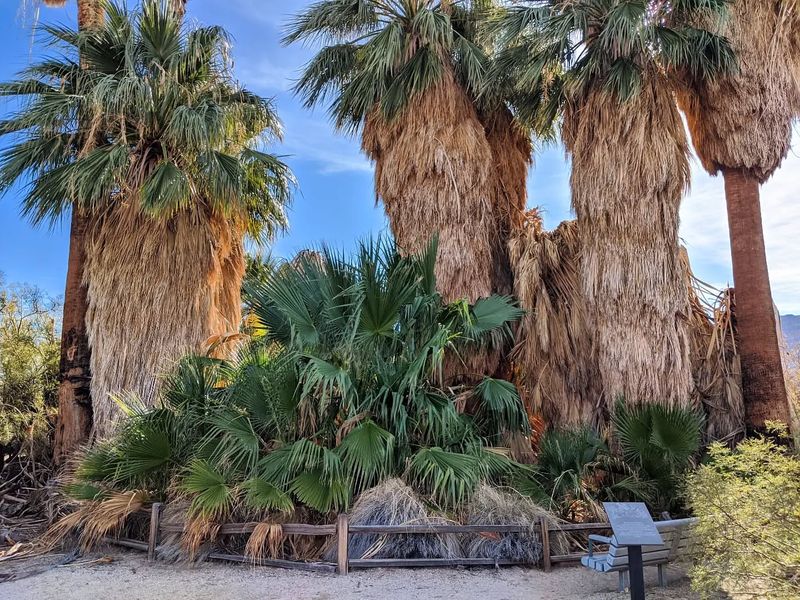Ever noticed purple splotches on trees while hiking through California’s forests? These aren’t random acts of vandalism or artistic expression. The purple paint serves important purposes across the state’s vast wilderness and private lands.
Spotting these colorful markings can tell you something significant about the tree or the area you’re in.
1. Property Boundary Markers
Purple paint often marks the edges of private property in California’s rural areas. Landowners use this method instead of posting traditional “No Trespassing” signs, which can deteriorate or get stolen. The paint creates a clear visual boundary that’s more permanent than paper signs.
Many hikers and outdoor enthusiasts don’t realize that crossing these purple lines could technically be considered trespassing, even without a written warning.
2. Logging Operation Indicators
Forestry companies mark trees with purple paint to identify which ones will be harvested during selective logging operations. These markings help logging crews know exactly which trees to cut and which to leave standing.
The system ensures sustainable forestry practices by preventing over-harvesting. Different patterns might indicate different instructions – a complete ring around a trunk might mean removal, while a partial mark could indicate trimming is needed.
3. Disease Control Zones
Trees infected with certain diseases might be marked with purple paint by forest management teams. This visual system helps track the spread of dangerous tree pathogens like Sudden Oak Death that threatens California’s iconic oak populations.
The marking allows researchers to monitor infected areas without taking constant samples. Park rangers and forestry officials use these markings to quarantine affected zones and prevent visitors from inadvertently spreading disease to healthy forest areas.
4. Wildlife Habitat Protection
Purple markings sometimes identify trees that provide critical habitat for endangered species. Trees containing nests, dens, or serving as important food sources might receive this special designation to prevent accidental destruction.
California’s forest management teams use this system to protect homes of threatened creatures like spotted owls or certain bat species. The paint signals to workers, hikers, and campers that these trees have special ecological importance and should be given extra space and consideration.
5. Trail Marking System
Some hiking trails in California use purple paint blazes to mark less-traveled or seasonal paths. Unlike the more common blue or white trail markers, purple often indicates specialized routes that might be temporary or require specific skills.
These markings help hikers navigate through complex forest systems without getting lost. In some parks, purple-marked trails might indicate routes that are only open during certain seasons or that lead to sensitive ecological areas with restricted access.
6. Research Study Identification
Scientists conducting forest research often mark study trees with purple paint. These trees might be part of climate change studies, growth analysis, or wildlife behavior research. The distinctive color makes it easy for researchers to relocate specific trees for continued data collection.
University research teams from UC Berkeley and other institutions frequently use these markings throughout California’s diverse forest ecosystems to track everything from fire resilience to carbon sequestration patterns.
7. Cultural Or Historical Significance
Purple paint sometimes marks trees with special cultural or historical importance to Native American tribes or early California settlers. These might be trees used for traditional medicine, ceremonial purposes, or that mark historical sites.
The marking system helps preserve living cultural artifacts that might otherwise be overlooked. In cooperation with tribal authorities, park services use these designations to educate visitors about the rich cultural heritage connected to California’s ancient forests and to prevent damage to these irreplaceable living monuments.

